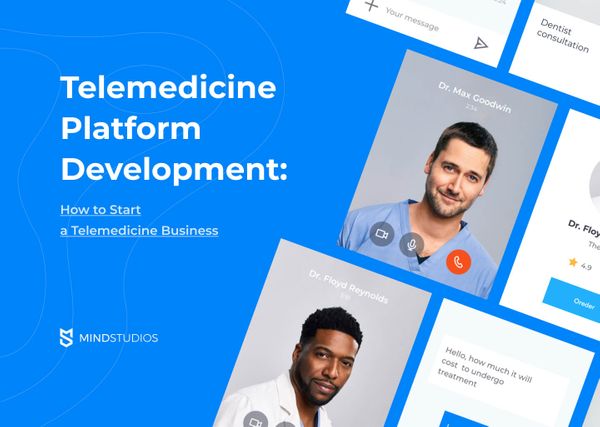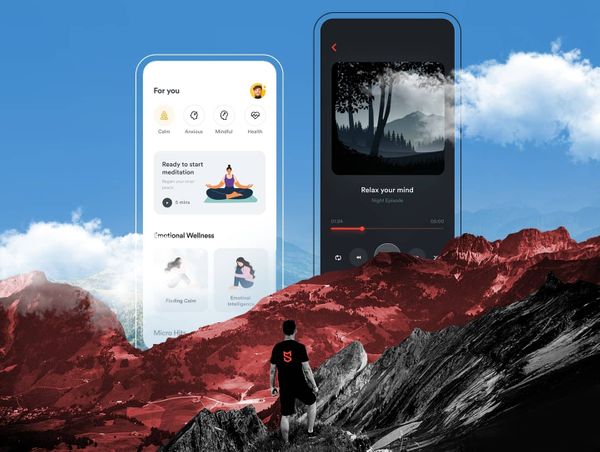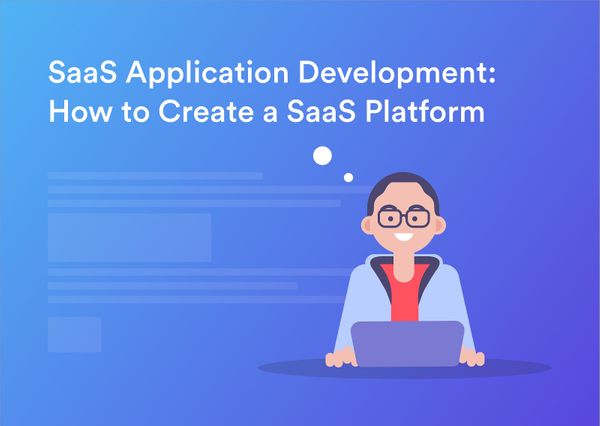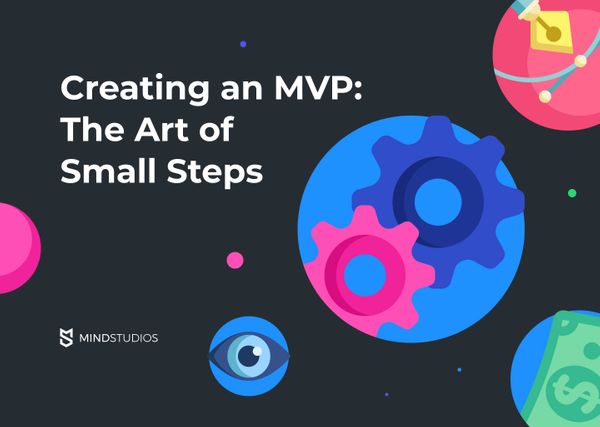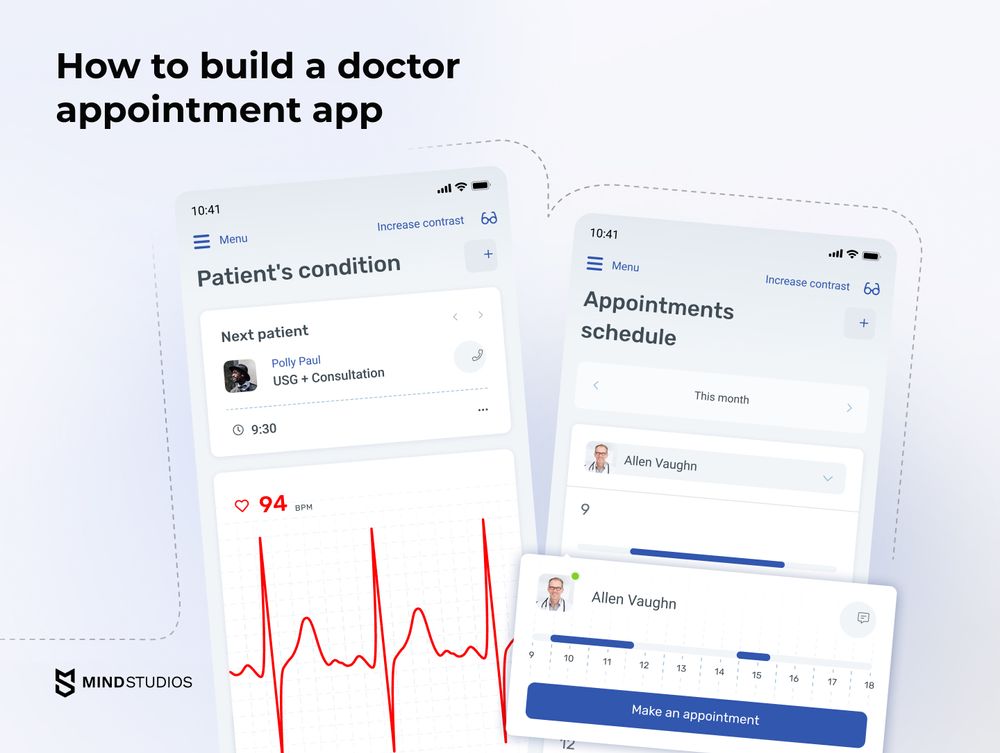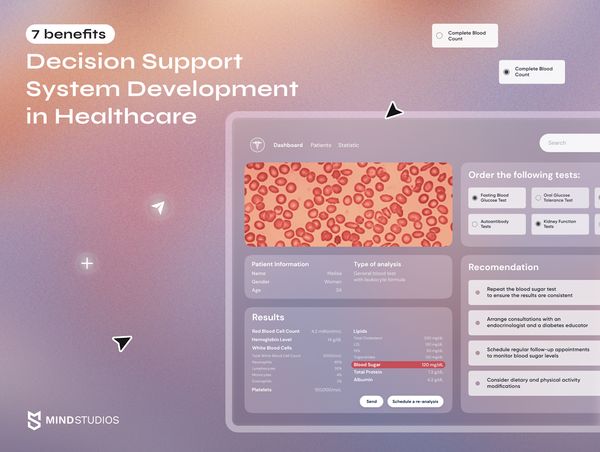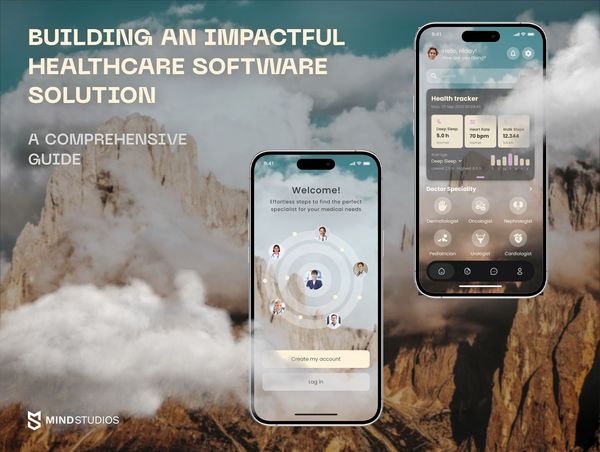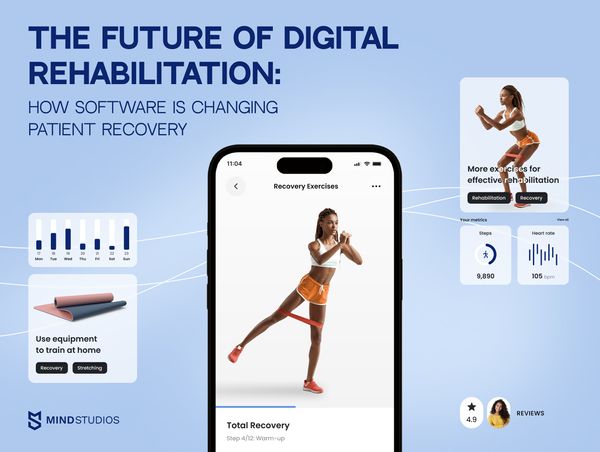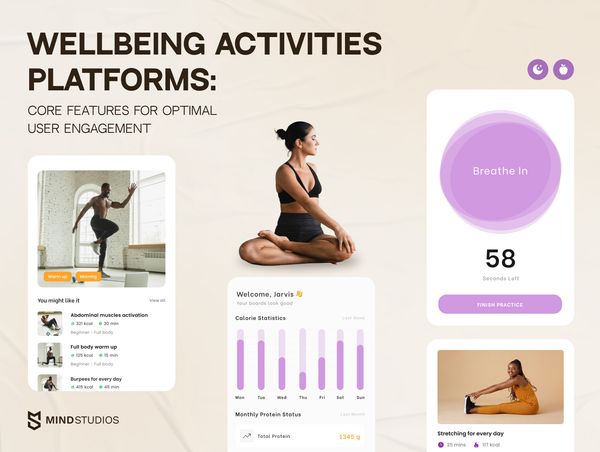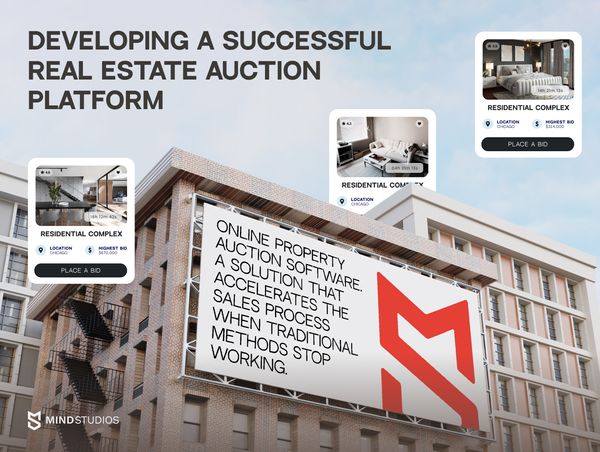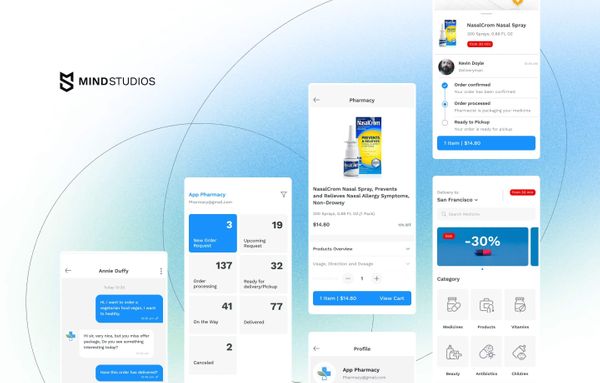
In this article, we talk about medicine delivery app development, how medicine delivery differs from a delivery service like Uber Eats, and what to expect when it comes to development processes and costs. Read on for details or jump to the last section to see a rough cost estimate to make a medicine delivery app.
State of the e-pharmacy market
People have never been as conscious about healthcare and medicine as they have become since the pandemic struck. One of the fastest-growing health-related niches is mHealth, which includes, among other things, e-pharmacies and on-demand medicine delivery services.
The size of the global mHealth market was $45.7 billion in 2020, and researchers predict it to grow at a CAGR of 17.6% between 2021 and 2028.
The high growth rate can mostly be attributed to the fast development of internet technologies and high levels of smartphone penetration. It has become much easier for patients to use telemedicine lately.
However, there was another push in 2020 — due to the pandemic, we saw more government initiatives regarding mHealth and telemedicine. Additionally, with heightened demand, more funds were poured into mHealth startups than previously.
Investments in the digital health market in 2021
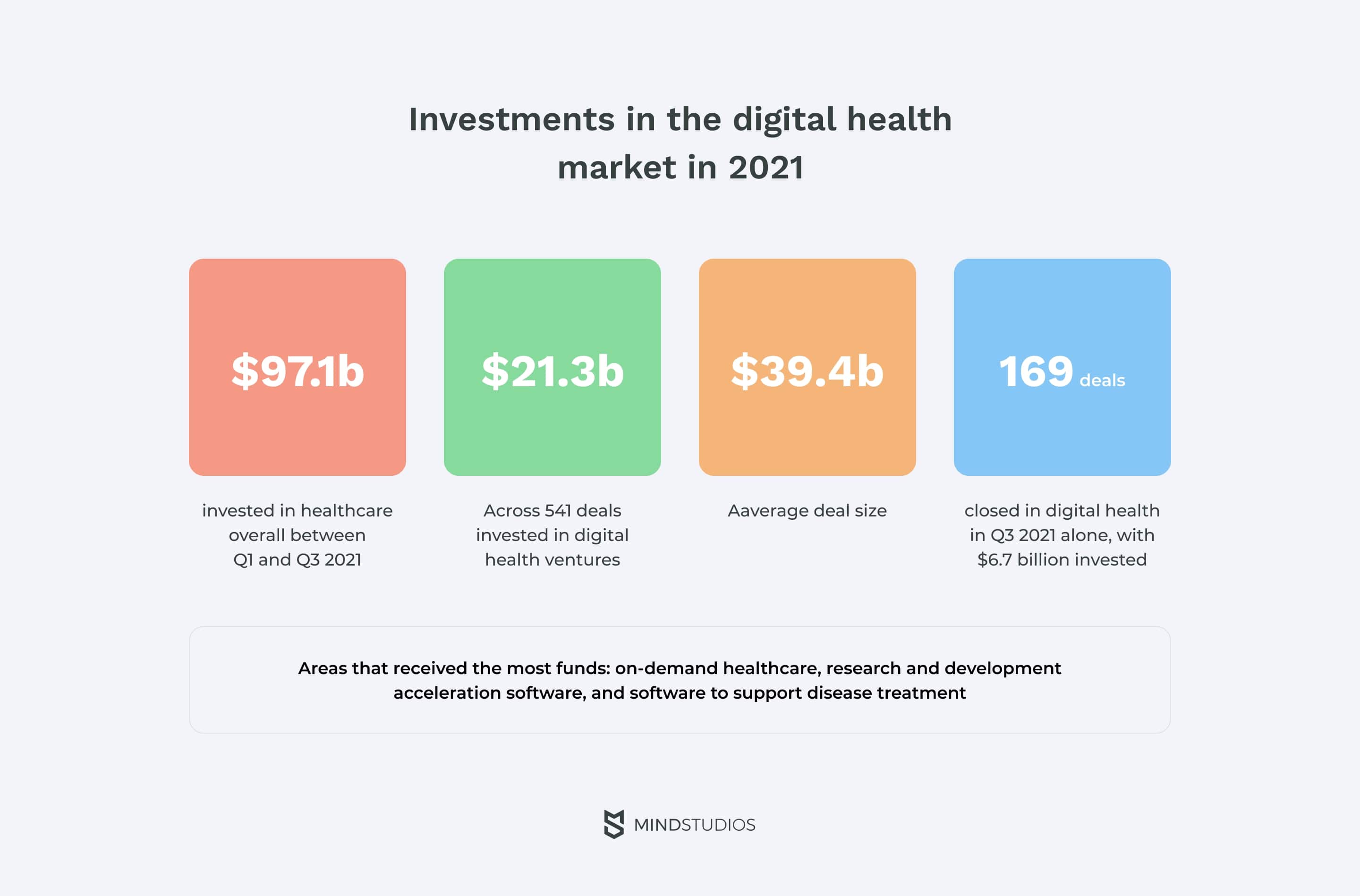
- $97.1 billion invested in healthcare overall between Q1 and Q3 2021 (22% of all money raised during this period)
- $21.3 billion across 541 deals invested in digital health ventures
- $39.4 million average deal size
- 169 deals closed in digital health in Q3 2021 alone, with $6.7 billion invested
- Areas that received the most funds: on-demand healthcare, research and development acceleration software, and software to support disease treatment
There were also several prominent deals in the on-demand medicine delivery niche in 2021. One was the February 2021 partnership deal between Ginger, a provider of on-demand mental health services, and Capsule, a digital pharmacy. This partnership provides Ginger’s patients with same-day mental health medicine delivery.
The other is a collaboration deal between the women’s healthcare provider Maven and digital pharmacies SMP and Alto to deliver fertility drugs.
It might also be worth noting that global trends include growing investment in women-led digital health teams and solutions: 19% of all deals in digital health in 2021 involved companies led by women CEOs.
Business models for on-demand medicine delivery services
If you plan to build an on-demand medicine delivery app, you have three paths to choose from.
| Medicine delivery app for your pharmacy | SaaS medicine delivery app | Uber-like medicine delivery app |
1. Medicine delivery app for your pharmacy
If you’re the owner of a pharmacy and would like to develop an app for medicine delivery to gain a competitive advantage in your local market, you’ll need two apps — a patient app and a pharmacy app. You can add a driver app for convenience, or you can manage the actual delivery manually. (But where’s the fun in that?)
If your pharmacy has ties to healthcare providers, you might also consider creating an app for doctors in addition to an app for patients.
2. SaaS medicine delivery app for pharmacies
You can operate a medicine delivery service even if you don’t own a pharmacy of your own. To do that, you can build an on-demand medicine delivery app and offer it to pharmacies that can’t or don’t want to invest in their own app.
Development-wise, creating a SaaS medicine delivery app is similar to creating an app for your own pharmacy, only with differences in the technology used.
3. Uber-like app to deliver medications
Another option for those who don’t own a pharmacy is a delivery service similar to Uber Eats but for medications. This business model connects pharmacies with drivers to deliver medicine to patients on demand.
Unlike with a SaaS app or an app for your own pharmacy, where a driver’s app is optional, in the case of an Uber-like delivery service an app for drivers is an essential part of your business.
Note: Medicine delivery requires extra care, so you’ll need to implement strict driver screening policies and monitor them closely.
How to Make an On-demand Medicine Delivery App

In this section, we briefly touch on the processes in place and what to expect when you wish to develop an on-demand medicine delivery app. If you want to look into our processes more closely, you can do so in our article on how to outsource software development.
What steps are there in the medicine app development process? Generally, in Agile, it goes like this:
-
Shape your idea in as much detail as you can on your own. The more detailed your idea is, the less time it will take for your team to start on development. When you approach a medicine delivery app development company with a well-fleshed-out idea, the team will be able to conduct targeted research, saving time and effort.
-
Set your budget. Most development companies that work according to Agile principles will offer you the possibility to spread development costs instead of paying the whole amount up front. However, you still need to assess how much money you can allocate to development, as it will affect your selection of companies to partner with.
-
Look for and choose medicine delivery app developers. Outsourcing software development companies are numerous and scattered all around the world. Choosing one is no easy task. When looking for a suitable company to build your online pharmacy solution, consider the following:
- Your budget
- Time difference
- Cultural fit and language differences
- Companies’ experiences and previous projects building health-related solutions
- Companies’ reviews on reputable platforms like Clutch
-
With your developers, conduct research and analysis to validate your idea and find its unique value proposition and market fit.
-
Designers create several prototypes of increasing complexity, from rough navigation concepts to high-fidelity (possibly interactive) prototypes. Creating multiple prototypes makes sure that you and your team see the future custom on-demand medicine delivery app the same way and that what you imagine will work in the way you imagine.
-
Launch marketing campaigns. Pre-launch marketing builds anticipation for your product and also helps you gauge interest and calculate possible profitability. It will also signify possible drawbacks and might point you in the direction of changes for the better.
-
You and your team launch a minimum viable product (MVP). An MVP is an abridged first version of your app. Its purpose is acquiring the first users, building brand recognition, gathering real user feedback, and making early revenue.
-
Analyze your MVP and marketing performance to continue development backed by data. Without data, building a business is like walking in thick fog. Making the most out of your MVP launch and marketing campaigns, you can obtain and analyze data — for example, using Unit Economics — so that each next iteration of your app is more successful than the previous.
Features for an on-demand medicine delivery app
In this section, we list the features we find necessary for developing a medicine home delivery app. However, this list is neither exhaustive nor binding. Having conducted thorough research on your target audience, you’ll know which on-demand medicine delivery app features are essential and which can be postponed or left out.
When we talk about on-demand medicine delivery app development, we usually are talking about creating four different components:
- Patient app
- Pharmacy app
- Delivery app
- Admin panel
Features for a patient app
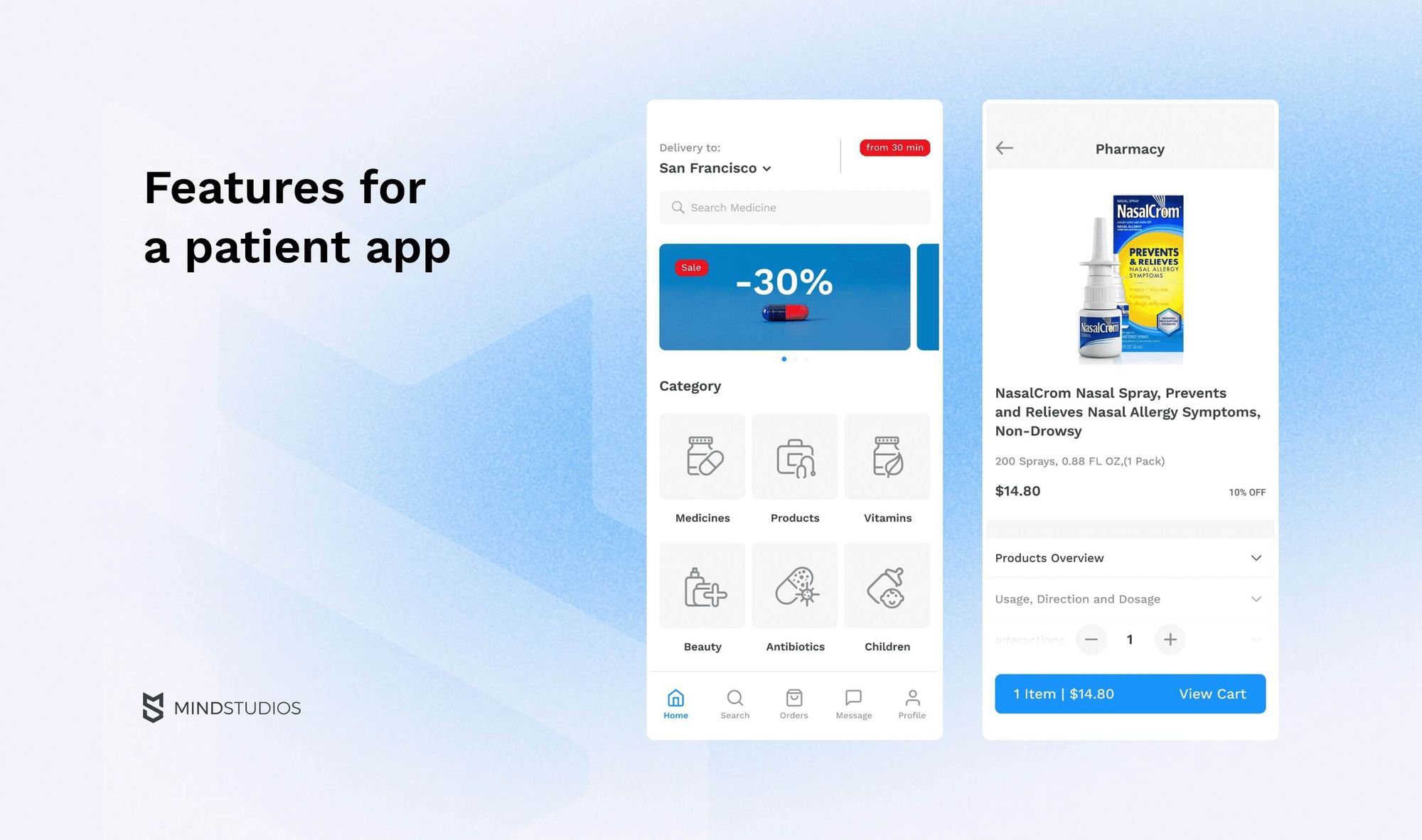
- Optional sign-up/sign-in
People who use delivery services would often like to keep track of their purchase history, easily re-order their regular medications, and access other features that require a user account. However, other patients, especially those who only occasionally need over-the-counter medications, would prefer to keep it simple and use your app as a guest. - Profile
There needs to be a space where registered users can quickly access their lists, history of purchases, and settings as well as configure notifications and store all their important data. - Find a pharmacy
If you’re aiming to make a medicine delivery app for a pharmacy chain, you’ll need to ask customers for their location data and offer them the closest pharmacy where they can find their medicine. - Medicine catalog
The app should contain a catalog of all medications available at each pharmacy. - Search
Users need to be able to find medicine by name. It might also be useful to have advanced search functionality like filters to find medication alternatives by purpose. - Patient verification
In most countries, pharmacies don’t sell to underage customers or only sell them certain things like harmless vitamins. Proof of identity and age is necessary to buy everything else. - Quick access lists
People should be able to add medications they buy regularly to lists so they don’t have to search for them each time they need to order. - Payments
Integrating secure payment functionality is essential for an enjoyable user experience. - Order tracking
Customers need to be sure their medications will arrive on time. - Notifications
Notifications about order statuses are a must. Also, for regular medications, users might need order reminders. Another use for notifications is to keep customers updated and let them know when a pharmacy offers discounts or loyalty programs.
Features for a pharmacy app
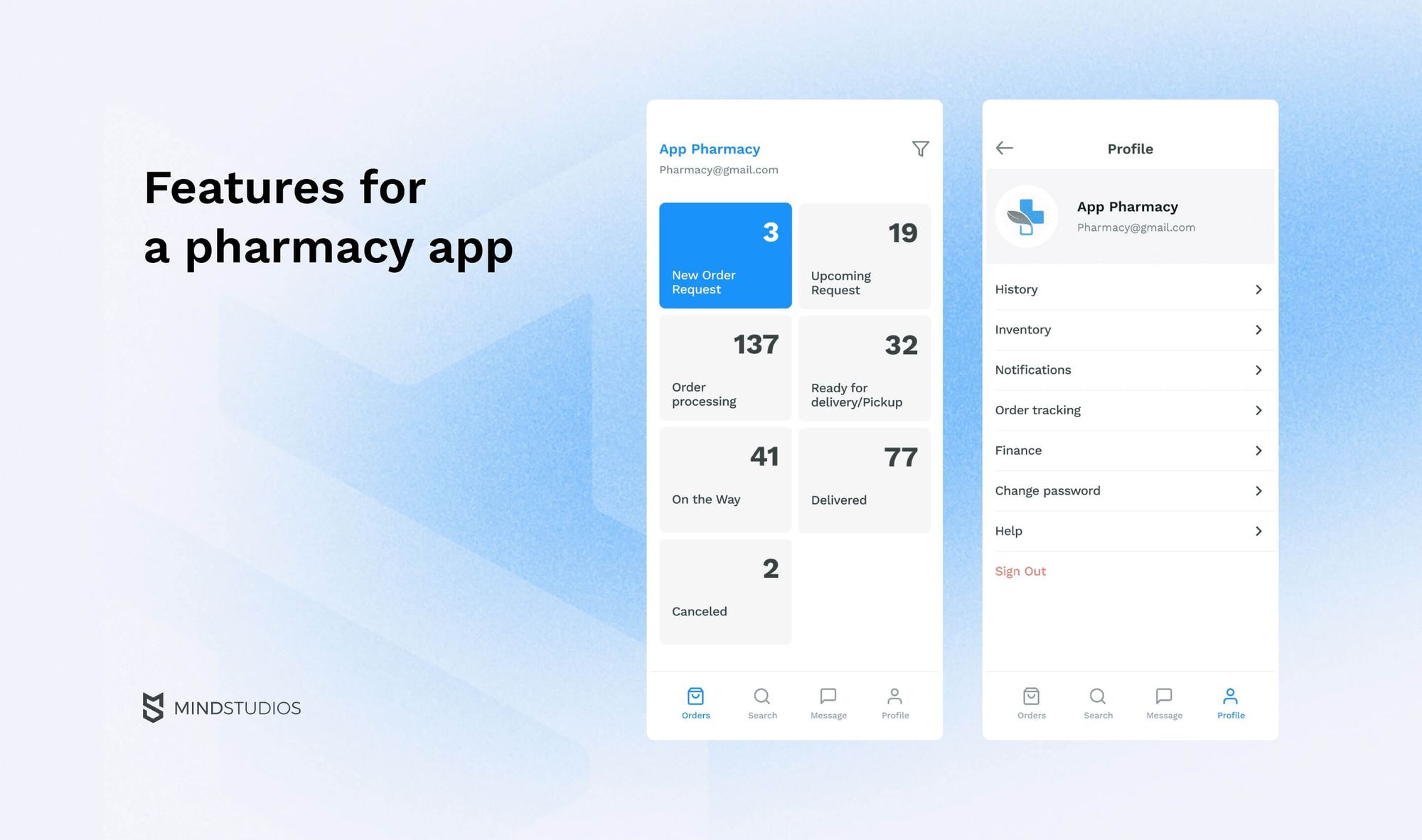
- Inventory
There must be a full editable list of available medicine, preferably sorted into categories, as well as the ability to set and change prices. - Notifications
To make delivery timely and not miss orders, your app needs to have a solid order notification system in place. It’s also helpful to have notifications about received payments if you choose to integrate payment functionality into your app. - Order management
Pharmacy employees need functionality for processing orders, setting statuses, etc. - Order tracking
Just like patients, pharmacies need access to order tracking. This will help managers and might be of use for pharmacy–patient communication. - Prescription viewing
Your app needs to support quality images so pharmacists can confirm customers’ scanned or photographed prescriptions. If digital prescriptions are used by doctors in your location, your app needs to be able to recognize them as well. - Events and loyalty programs
If discounts, events, and loyalty programs are something your pharmacy does, your app needs functionality to add and manage them.
Features for a driver/runner app
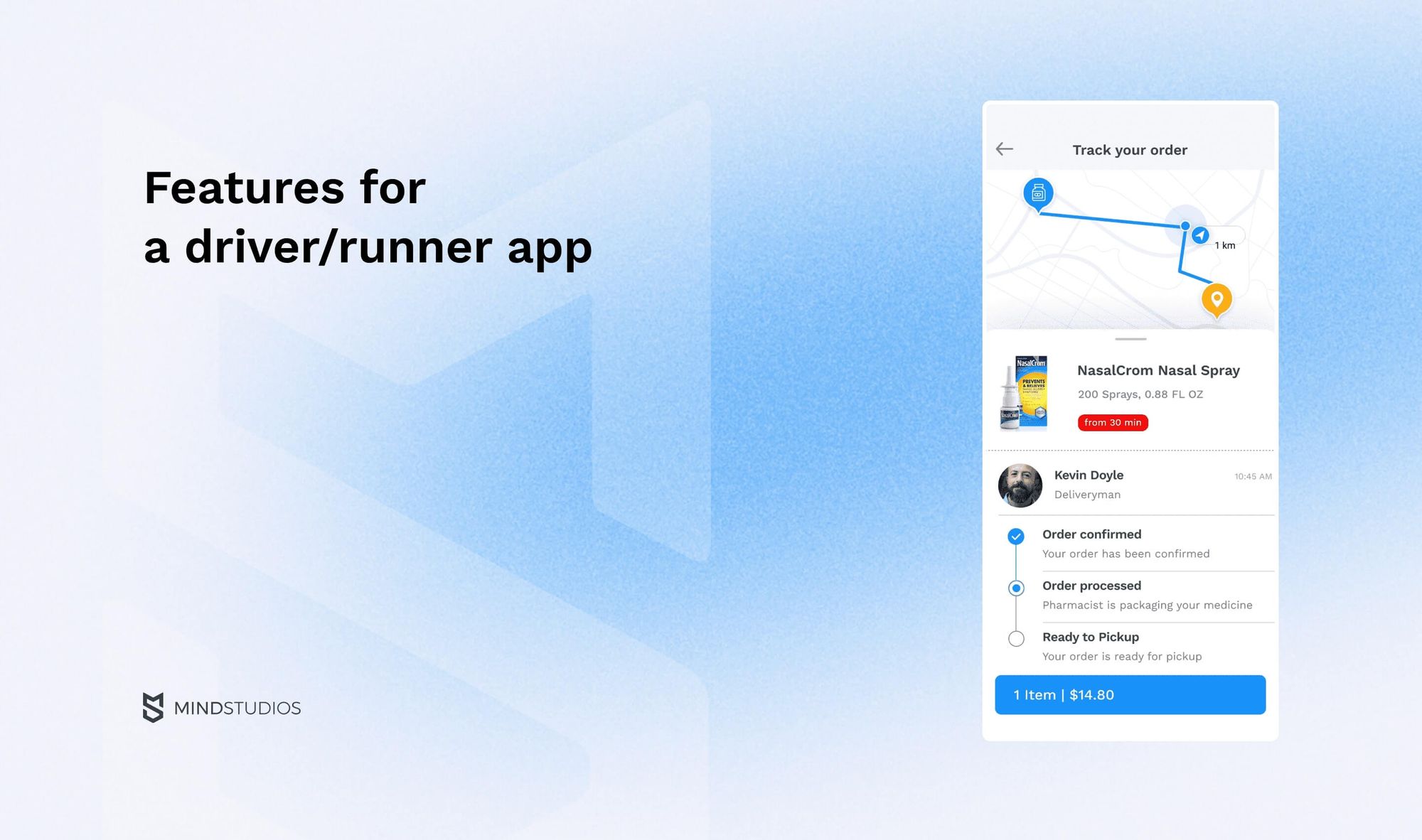
- Order notifications
Unless your pharmacies distribute orders to drivers manually, it would be convenient if your app notified drivers that there’s an order to pick up. This is a must-have feature for Uber-like delivery services where drivers choose to pick up orders themselves. - Order statuses
Whether your drivers are assigned to deliveries or they pick up orders themselves, it’s essential that they set order statuses to let pharmacies and customers know where they are, what orders they have already delivered, and which are on the way. - Maps
Map integration in the app will help drivers optimize their routes and will deliver order tracking data to pharmacies and customers. - Order information
Medications might be tricky to deliver. Some medications require careful handling and others might need cold containers for transfer. Delivery people need to know what they’re carrying so they can exercise proper care. - Proof of delivery
Delivery drivers and runners will need to ask customers to confirm delivery. This can be accomplished by signing a confirmation form on a delivery person’s device or through the customer’s own app. - Setting availability
If your application distributes and assigns orders automatically, drivers/runners will need to notify the system of their availability for delivery. This is important to avoid situations when an order is assigned to a delivery person who isn’t working.
Features for an admin panel
- Dashboard
A dashboard is necessary for pharmacy owners or managers to monitor inventory, payments, comments, and complaints. - Analytics
App analytics is critical to monitor both app and pharmacy performance to make data-driven changes to your business. It’s possible to integrate real-time analytics with daily, weekly, and monthly reports. - Payment gateway
In order to manage online payments, you’ll need to integrate payment functionality between the customer app and the admin panel.
Extra Features for Your Custom Medicine Delivery App
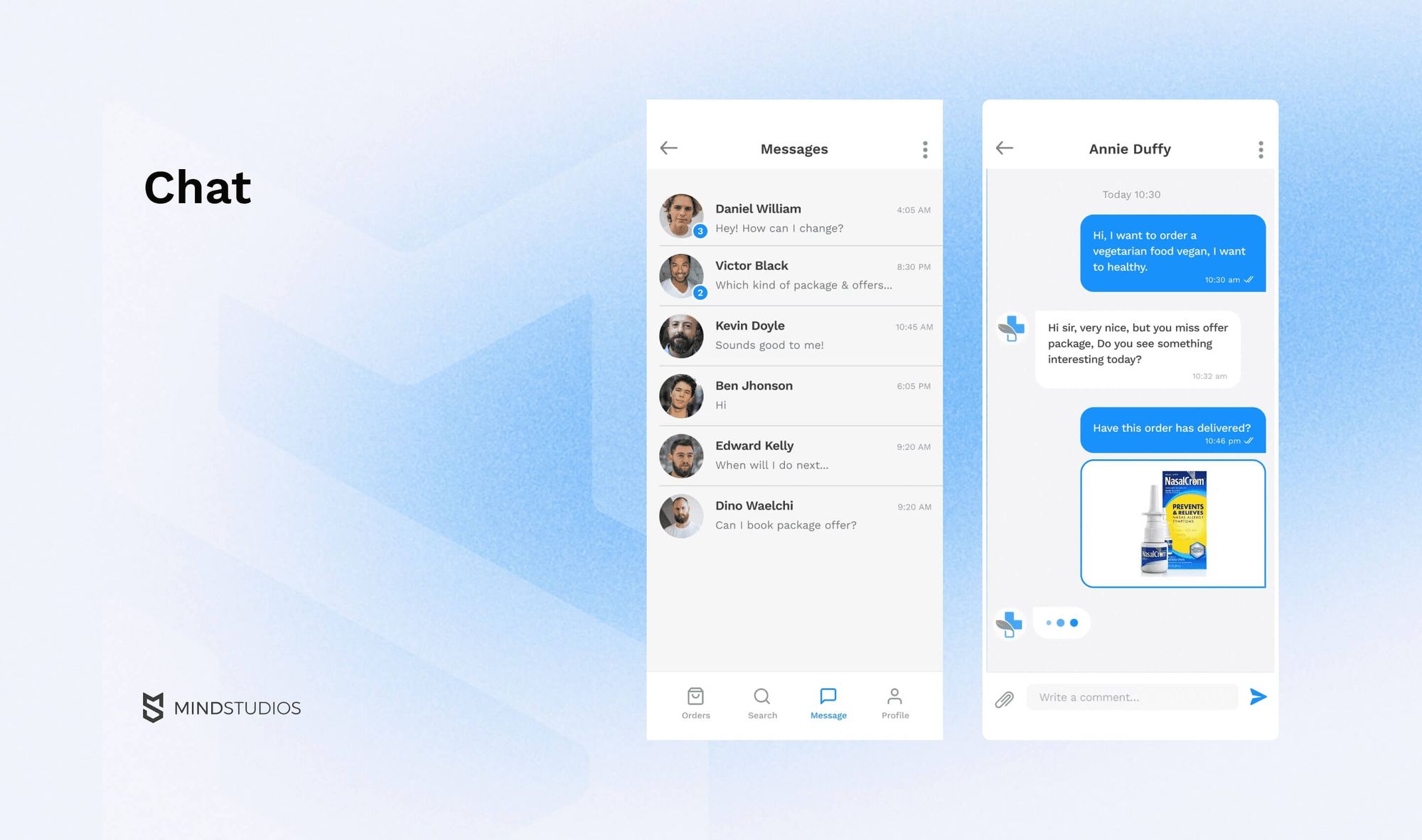
- Chat and/or chatbot
Chatbots will help customers navigate your app. An option to chat with a live pharmacist will most likely be useful for customers looking for alternatives to well-known medications as well as for those unsure of what they need. - Comments and feedback
An option to review the customer experience, leave a complaint, and offer overall feedback will be of use for customer–pharmacy communication and your business development.
Tech stack for online medicine delivery app development
When you calculate the cost of developing your medicine delivery app, you’ll need to consider not only developers’ pay but also the investment you’ll need to make into technology solutions your app will use. Some of those solutions are optional, but others are necessary. Here, we’ll show you several examples and explain how they benefit your on-demand medicine delivery app development.
APIs
APIs — application programming interfaces — are used to implement parts of functionality instead of building it from scratch. APIs shorten the development time and help you launch your app faster. There are quite a number of free open-source APIs available, but there are also some that are paid. Typically, using even paid APIs is still cheaper than building a feature from scratch.
Custom medicine delivery apps might need APIs to integrate maps or add communication functionality for chats and calls.
Note: If you’re thinking about developing an app like Uber Eats for medicine delivery, you might need to consider developing a custom API to allow partner pharmacies to upload their inventories to your app without extra hassle.
Cloud servers
A medicine delivery app needs to connect customers with pharmacies instantly, and cloud servers manage this better than traditional servers. Besides, cloud servers have higher levels of security by default, which is of the utmost importance when we’re talking about prescription delivery app development: customers need to upload personal data to buy prescription medicine, and this data is sensitive and is protected in many countries.
High-end security
As we’ve just mentioned, medical data, including prescription data, is considered sensitive and is therefore subject to data security requirements in the location where you plan to launch your app. Besides, superb security will enhance your business reputation and bring you more users.
How do medicine delivery apps make money?
The answer to this question will heavily depend on the business model you choose. If you’re building a medicine delivery app for your own pharmacy, its purpose is to make your business more profitable by expanding into a larger target market. The profitability of the app itself will probably be of secondary concern.
However, if you’re building a medicine delivery app to offer as a service, your app will need to earn money on its own, and there are two ways to do so.
- Delivery fees. These fees will be collected from customers using your app. It’s considered good business practice to notify users that the delivery fee is separate from the medication cost. The delivery fee will be split between the app owner and those making deliveries (unless it’s your fleet making deliveries and you pay your delivery drivers regular salaries).
- Fees paid by partner pharmacies using your app. In this model, a pharmacy pays the app provider for the app as long as they use it. This can be a specific amount paid as a subscription, or it can be an agreed percentage of the sales made through the app. You’ll need to conduct research and monitor app performance to choose which model is more appropriate.
It’s also possible to combine these options.
How much does it cost to make an on-demand medicine app?

To precisely estimate costs for developing your medicine delivery app, we’ll need to know the project’s details. However, we can offer a rough estimate for a medicine delivery MVP based on our research and experience.
For the purpose of this particular article, we assume that:
- There’s a mobile app for customers
- There’s a mobile app for drivers
- The app for pharmacies is web-based
- The admin panel is a web app with minimum bells and whistles design-wise
Generally, apps for customers and drivers are built mobile-first for convenience of use on the go. On the other hand, apps used by pharmacists benefit more from larger screens on which it’s easier to view order details and prescriptions. Besides, developing a web app is usually cheaper than developing a mobile app with the same functionality.
Finally, an admin panel is built for the web and with a minimalist design simply because no customers will see it. It’s best for an admin panel to be easy to use, but the visuals are often of little importance. (Unless you want to pay extra to make it fancy, in which case — no problem!)
The people you’ll need for all four sides of your app are these:
- Project manager
- Server-side (backend) developer
- Quality assurance engineers
To build a medicine delivery app for customers and an app for drivers, you’ll need:
- iOS and/or Android developers
- UI/UX designers
And for web-based apps (pharmacy and admin panel):
- Web designer
- Frontend developer
Depending on the number and complexity of features you’ll be adding to your product’s MVP, its development might take anywhere from four months to a year, based on our experience. And if we assume that the APIs developers will use are free and open-source and calculate the cost only for developers’ working hours and some unavoidable costs (e.g. servers), you can expect to invest these amounts:
| Medicine delivery app development cost | |
|---|---|
| Customer app (iOS/Android) | $70,000 |
| Pharmacy app (web-based) | $25,000 |
| Driver app (iOS/Android) | $50,000 |
| Admin panel (web-based) | $8,000 |
| Total cost | $153,000 |
On-demand Medicine Delivery App Development: Conclusion
The turbulent times we live in combined with people’s desire to make services more accessible and accommodating creates huge potential profitability for on-demand services of all kinds. As shown by research, on-demand medicine delivery is becoming a substantial niche in this market.
We hope we’ve answered at least some portion of your questions about how to develop an on-demand medicine delivery app. If you’d like to clarify anything or if you’d like to get a personalized quote for the cost of development, reach out to our specialists. We’ll be happy to provide assistance.

